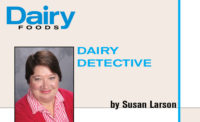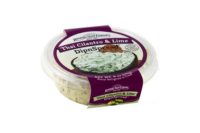In 2014, more than 90% of Americans gave some thought to the healthfulness of foods and beverages they consume. This increased emphasis on health and wellness is driving consumers to seek out beverages that have ingredients with true nutritional value.
Usage of dairy proteins — including whey protein, whey protein concentrate (WPC), whey protein isolate (WPI) and milk protein isolate (MPI) — has grown the most among all proteins because of their advantages in functionality, flavor and nutrition. Whey protein, WPC, WPI and MPI all were included in more new product launches in 2014 than in 2013.
Powering an active lifestyle
Almost half of Americans have increased their physical activity in the past two years, which makes it more important that consumers tap into the numerous benefits of high-quality proteins to enjoy their more active lifestyles. Dairy proteins are high-quality complete proteins that contain all of the essential amino acids the body needs. Compared with other proteins, whey protein is the best source for branched-chain amino acids, which bypass the liver and go straight to the muscle for a better recovery and reduced soreness. The result is a faster rate of absorption for recovery, maintenance and growth.
Whey protein beverages should be consumed in connection with exercise. Consuming 20 grams of whey protein after resistance exercise can increase muscle protein synthesis and improve overall body composition.
Milk proteins and micellar caseins also offer valuable attributes to beverage formulations. Milk protein contains 80% casein, a “slower acting” (slow) protein, and 20% whey, a “faster acting” (fast) protein. Fast proteins break down quickly, allowing for quicker absorption of nutrients, while slow proteins take longer to digest. The combination of the two is optimal for lean body mass gains.
Micellar caseins, meanwhile, deliver the full amino acid profile of casein with typical micellar casein boasting a 92:8 ratio of casein to protein. This results in a slower absorption rate than milk protein.
Exercise recovery beverages allow convenient and timely options for protein intake. Drinks that coincide with physical activity already are popular among consumers and are expected to grow to $9.3 billion in sales by 2017.
Along with muscle care, dairy proteins assist with weight management. With four out of five Americans trying to lose or maintain their current weight, reduced-calorie, higher-protein diets take on greater importance. Dairy proteins improve the perception of fullness by curbing hunger, which helps consumers lose weight by feeling fuller longer.
To maximize the benefits of U.S. dairy proteins, the amount consumed is essential. While protein needs vary by age and lifestyle, it’s recommended that on average, a person consume 20 to 30 grams of high-quality protein per meal.
On-the-go beverages, which represent 75% of the top meals consumed during a wake-up routine, offer an easy solution for helping get the right amount of the day’s total recommended protein while satisfying consumer demand for convenience. In fact, 37% of successful new food and beverage product launches include statements about portability or ease of preparation.
A healthy choice for all ages
High-quality dairy proteins contain effective nutrients for consumers of all ages. The amino acids in protein are critical for the health of young children and infants. Improvements in the formulation of infant formulas mimic many characteristics of human milk.
Whey protein is widely used by infant formula manufacturers to adjust the protein composition of formula made with cow’s milk to reflect that of breast milk. Advancements have increased consumption with baby formula launches experiencing a 27% average global growth rate over the last five years.
As we age, our lives will continue to benefit from protein. Millennials (between the ages of 18 and 34) can stay active and health conscious, and combining dairy proteins with beverages will complement their busy lifestyles. This point was evident in this year’s National Dairy Council New Product Competition. The team of graduate students from North Carolina State University took home the top prize with its Shake and Go Kefir. This convenient breakfast or snack item featured 13 grams of protein packaged in an easy, on-the-go container.
For seniors, higher protein intake, sometimes more than what’s recommended, is appropriate for muscle maintenance. With aging comes a decrease in muscle mass, strength and functionality. Consuming 40 grams of protein after resistance exercise will help maximize muscle protein synthesis in older adults. With healthier aging comes a better quality of life.
Visit ThinkUSAdairy.org for more information on the benefits of including protein in beverage manufacturing.




